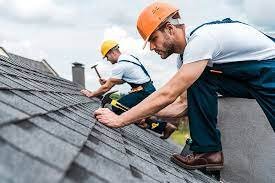Most of people do not bother about the roof design or style while making the house or building. The roof design gets noticed when you have to repair or replace the roof of your house or building. The roof design or style gives an aesthetic look to the interior of your house and also adds to the value of your house.
The roof plays an important part in making your house more energy-efficient and directly affects your utility bills. The roof material and construction are always given more importance but the style and design of your roof are a factor that can totally change the exterior look of your house and prove to be game-changing. A better roof can also give you more space and storage options.
Different Roofs Types and Styles
Following is a list of different roof styles designs to let you choose from a vast variety of different roof styles options.
- A-Frame Roof Style
The A-frame roof style is like a sloped roof. It is vertical and pointed towards the ground. It goes all the way from the top till the ground. It is inexpensive and easy to make. It also serves as both roof and walls.
- Bonnet Style
This style of roof is designed in a style that includes a ledge extending towards the base of the roof. The benefit of this roof style is that you can add variations in this style. With a bonnet style at one side, you can add some other style on the other side. This means you can make a hybrid roof with bonnet style.
- Butterfly Style
Butterfly styled roof is like a V-shaped roof. It is somehow an old fashioned design and not very famous among homeowners and builders. The benefit of this style is that you get two sided tall ceilings in this design.
- Clerestory Style
This style of roof is built with a wall that is going above on one side of the roof. The extending wall with the roof is designed to have several windows in it. This allows more light to come inside.
- Curved Roof Style
Curved roof style looks very modish and trendy. It adds value to your home or building. The curved roof also opposes against strong winds thus saving your house from strong storm winds. But the main reason why this roof style is chosen is they add a chic look to your house.
- Dome Style
The dome style roof, as the name implies is in the shape of a dome. This is a rather difficult design in terms of building and construction but it looks traditional and retro. Mostly historic buildings have dome style roof and difficult to install new roof.
- Flat Style Roof
Flat style roofs are simple and easy to build. They propose a simple yet elegant look to your house. Flat roofs are highly beneficial as they give you an opportunity to have an extra space which you can utilize in the form of rooftop garden or attic.
- Box Gable Roof Style
The box gable roof style has two sloping sides that meet each other to form a triangular shape and then the sides are boxed off from the walls. This roof style is more appropriate for cold climate and areas with extreme weather conditions. This style has a solid design made to deal with rain and snow etc.
- Hexagonal Gazebo Style
This style of roof is made with six triangle shaped roof panels and six rafters to support these panels. This style is mostly used to make a gazebo in a commercial garden space. It can also be built in the home garden.
- Hipped Style Roof
This style has sloping ends which are directed inwards. The four sides of the roof when meet at one point then it forms a pyramid hip style roof. If the points do not meet then it is a simple hip style roof.
Final Thoughts
The types and styles of roof change with the climate, structural design and personal preferences of home owners and builders. But it is important to understand the styles in your area, suitable for your home type and that suits your climate. This will be useful for you take the final decision about roof style whether you are building from scratch or going to modify an existing one.
Is it safe to install solar panels on roof?
The Solar panels do not damage your roof, and they may even increase the worth of your old house. Homes with solar panels can potentially sell for around 4% more than homes without them.


